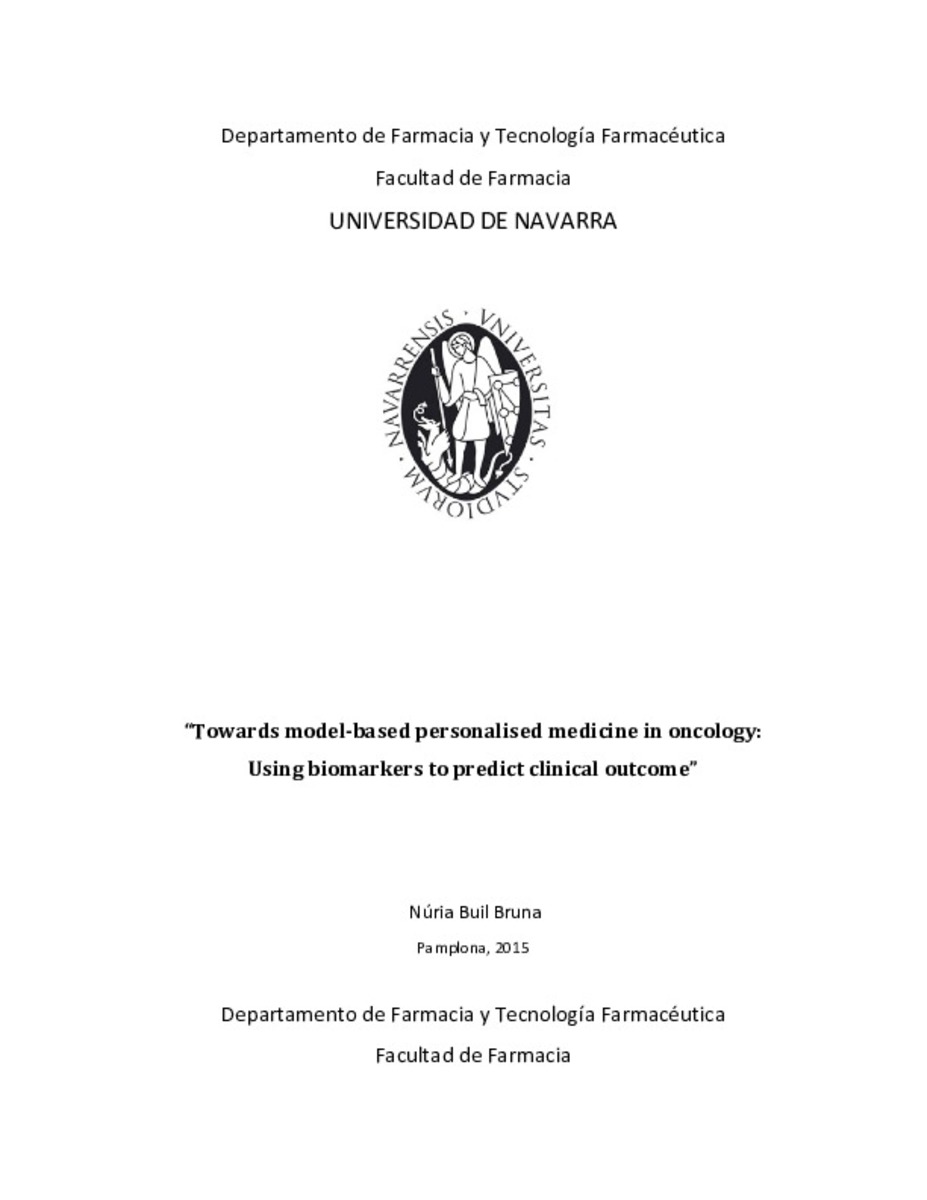Towards model-based personalised medicine in oncology: Using biomarkers to predict clinical outcome
Keywords:
Bioestadística
Modelos de población
Farmacología
Materias Investigacion::Farmacia::Farmacia y farmacología
Análisis de datos
Citation:
BUIL BRUÑA, Núria. “Towards model-based personalised medicine in oncology: Using biomarkers to predict clinical outcome”. Trocóniz, J. I. y López-Picazo, J. M. (dirs.). Tesis doctoral. Universidad de Navarra, Pamplona, 2015.
Statistics and impact
0 citas en

0 citas en

Items in Dadun are protected by copyright, with all rights reserved, unless otherwise indicated.







